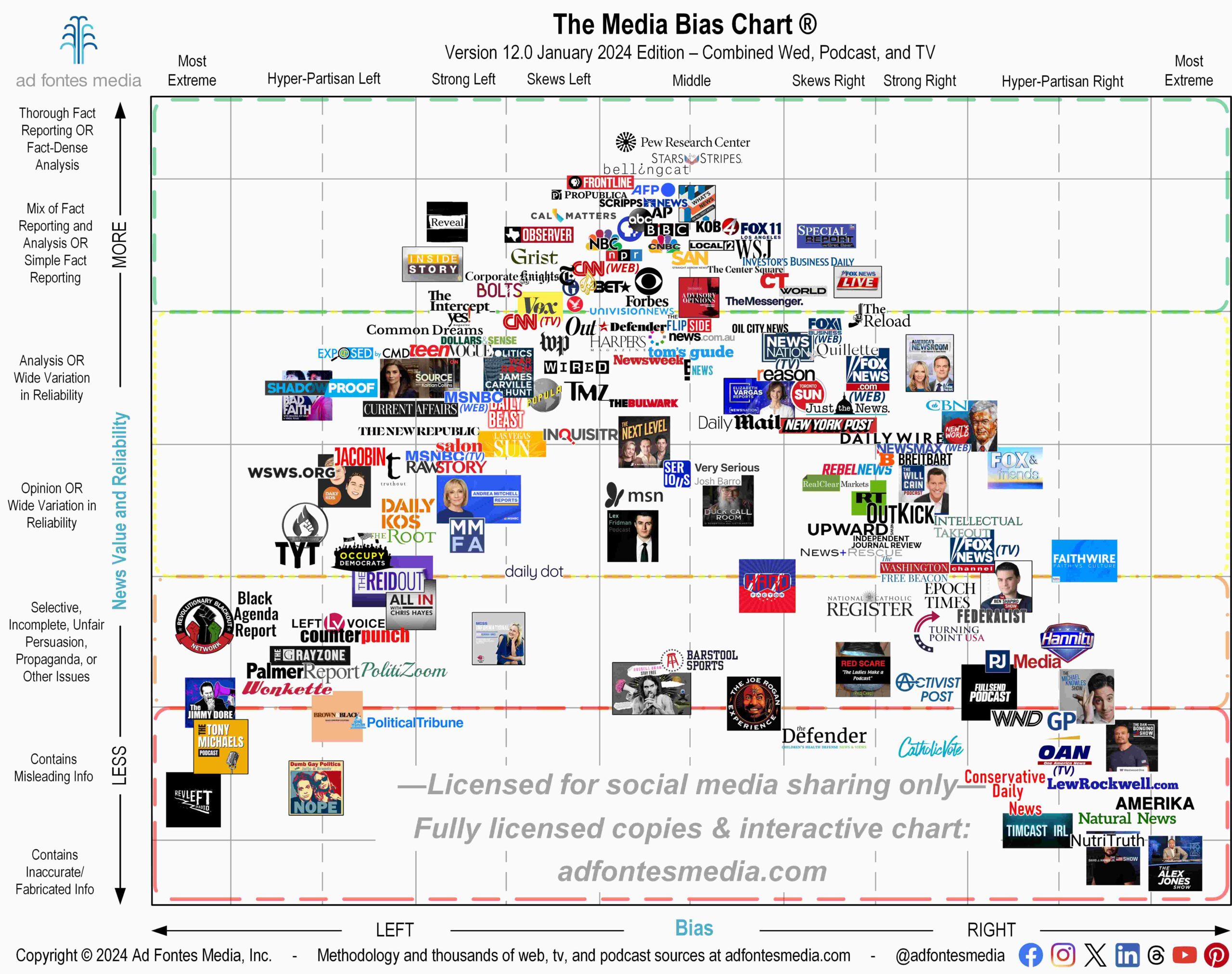Menu

No, Our Diverse Analysts Don’t Agree on Politics, and That’s Good
Ad Fontes Media’s methodology relies on diversity of thought
Author:
Vanessa Otero
Date:
12/13/2023
We’ve received much criticism over the years about our Media Bias Chart® and the placement of particular news sources within it. That’s OK; we welcome your comments on our work. But some of our most vocal critics have expressed disbelief that our politically diverse team can actually reach a consensus on the bias and reliability ratings of particular sources, especially hyper-polarizing news content.
What these critics don’t understand is that our analysts don’t have to agree on the issues to do this work. It’s not their job to agree whether, for example, abortion restrictions are good, if George Santos should be expelled from Congress, or whether the U.S. should approve more funding for Ukraine. Their job is to agree whether particular articles or episodes about these issues are unbiased and reliable. Let me explain.
One of the foundations of our content analysis methodology is to mitigate the bias of our work by assigning a pod of analysts to review each piece of content (podcast episode, website article, TV program, etc.). Each pod contains a left-leaning analyst, a right-leaning analyst, and a center-leaning analyst. The three of them work together to evaluate the content — to determine bias and reliability scores.
Our analysts often find content containing misleading headlines, typos, unverified or false information, name calling or insults. Personal political beliefs do not come into play when identifying these. Likewise, it doesn’t matter if an analyst is a Republican, Democrat or Independent when determining if a statement is presented as fact, opinion or analysis.
Even a staunch conservative can identify language that is biased against President Biden in this article from the Western Journal. Even a steadfast liberal can determine that the headline of this article from the MSNBC website is inflammatory. The analysts’ personal opinions about Biden’s mental fitness or Henry Kissinger’s career are irrelevant when applying the methodology to determine the bias and reliability scores of these stories.
Do our analysts always agree? No! That’s why all content is reviewed by a pod of three politically diverse analysts. One analyst might notice something that another analyst missed. Rating content together in shifts reveals blindspots, fights against confirmation bias, and allows for discussion and debate. A majority of the time our analyst teams come to a consensus by consistently applying the content methodology. Our analysts analyze; they don’t advocate.
So yes, our analysts can agree on how biased and reliable a particular piece of content is, despite their various political beliefs. In fact, they do this every day. The work of Ad Fontes Media is built on the presumption that people who disagree politically can work together.
Are our analysts perfect? Of course not. If a consensus can’t be reached, we have another panel of analysts review the content. Our entire team — from the analysts to the staff — is made up of politically diverse individuals, so at every level we are fighting for diversity of thought and a balanced approach to the methodology.
It’s important to understand that we do not believe that bias is inherently bad. In fact, democracy relies on diverse ideas and debates on the issues. I appreciate the various viewpoints represented by my team. Critics who think our politically diverse analysts can’t possibly agree simply don’t understand what we do.
I hope you use our Media Bias Chart as a guide this holiday season when you discuss media coverage of the news with your politically diverse family and friends. You might find that you agree more often than you expect!
Want to keep up with all of the work being done by the Ad Fontes Media team? Sign up for our free weekly email newsletter!
Vanessa Otero is a former patent attorney in the Denver, Colorado, area with a B.A. in English from UCLA and a J.D. from the University of Denver. She is the original creator of the Media Bias Chart (October 2016), and founded Ad Fontes Media in February of 2018 to fulfill the need revealed by the popularity of the chart — the need for a map to help people navigate the complex media landscape, and for comprehensive content analysis of media sources themselves. Vanessa regularly speaks on the topic of media bias and polarization to a variety of audiences.


